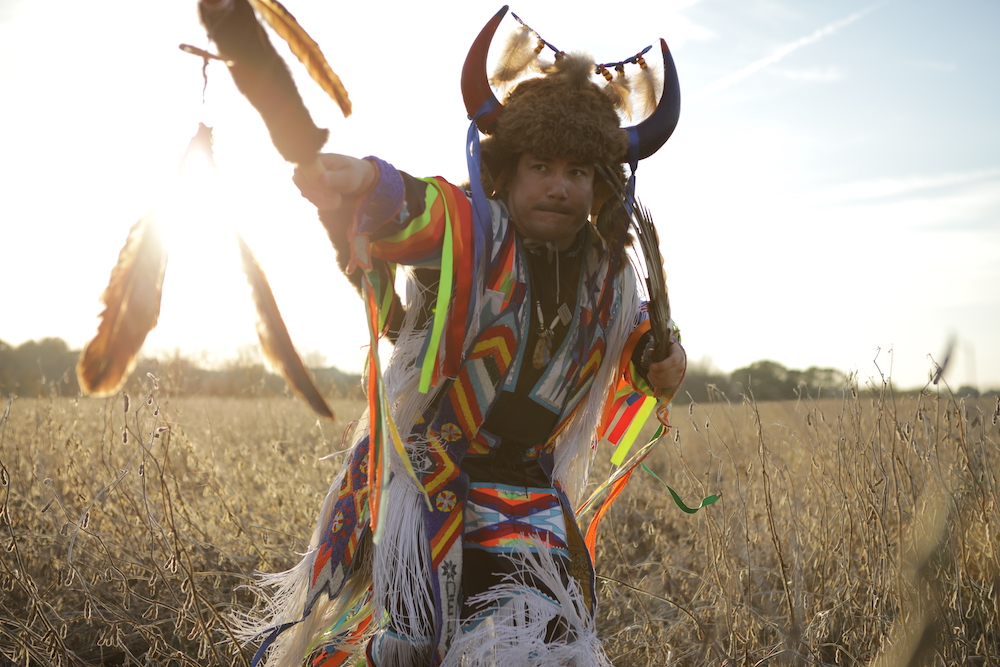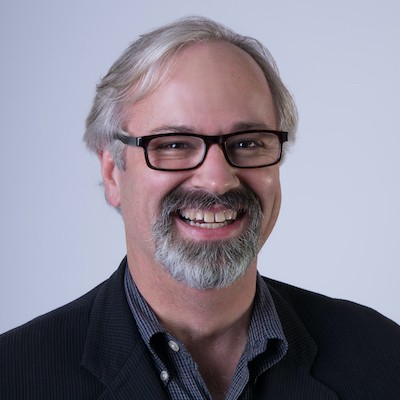
- Details
- By Brian Edwards
When Ojibwe filmmaker Elizabeth Day joined Without Arrows as co-director, she knew the documentary needed to speak directly to Native audiences. That confirmation came during a recent test screening in Duluth, Minn., when the packed theater roared with laughter at a scene showing family members struggling to drag a fresh buffalo hide across the ground and heave it into a car trunk, blood staining everything in its path.
"The audience was roaring on the floor, laughing, knee-slapping," Day recalled. "A woman in front of me was like, 'been there, done that.' And I was like, 'Yes, this is our audience.'"
The moment epitomizes Without Arrows, a new documentary premiering Monday, Jan. 13 on PBS's Independent Lens. The film offers an intimate portrait of contemporary Native American life through the story of Delwin Fiddler, Jr., an enrolled member of the Cheyenne River Sioux Tribe, as he returns to his reservation in South Dakota after 13 years in Philadelphia.
The documentary's 13-year production journey began with an unexpected phone call to Philadelphia filmmaker Jonathan Olshefski. "I get this phone call from this guy who's like 'Jon – when are we going to make our movie?'" Olshefski recalled. That call came from Fiddler, an acclaimed grass dancer. Over the next decade-plus, Olshefski's cameras captured ceremonies, births, and the passing of elders. These moments of joy and loss weave together in the film to tell not just one man's story, but the story of a family and community across time.
Several years into production, Olshefski recognized the need for Native perspective in telling the story. Through public television connections, he reached out to Day, a member of the Leech Lake Band of Ojibwe whose film work focuses on contemporary Native American stories. "I have things I just don't understand as a white guy, especially a white guy living in Philadelphia," Olshefski explained. "I wanted to have a Native collaborator."
The film captures Fiddler's journey as he navigates between two worlds. Those relationships present themselves differently when Delwin is in Philadelphia versus when he ends up moving home, Olshefski noted. "He's navigating that sense of place and identity across multiple locations that I think is sort of universal to a lot of Native folks living in a context where place is really complicated due to what the American government has done to this community."
The documentary captures both celebratory moments and challenging conversations, focusing particularly on Fiddler's relationships with his parents and his role in preserving cultural traditions. At one point, Fiddler's mother asks him to help preserve Native culture for the next generation.
Day explained: "She tasks him with 'you're 30 years old now, and you have a new set of responsibilities to our family and to our community.' He's not only navigating a reconnection with his family, but also something that's more unique to his community: What does it mean to be a Lakota man? What does it mean to be a Lakota son, father and community member?"
Day emphasized the importance of showing the community's full spectrum of experiences. "We were really mindful to not sanitize the film but also really to show the positive aspect of the community, the laughter, the joy, the strength, the resilience," she explained. "That's how we've survived as a nation and as a culture – through laughter."
To ensure authentic representation, the production team included Native creators in key roles, including editor Leah Hale (Sisseton Wahpeton Dakota and Diné Nations), composer Olivia Komacheet (Comanche and Otoe-Missouria) and cultural consultant Wayne Ducheneaux (Lakota) who grew up with the Fiddler family and went to high school with Delwin.
The filmmakers developed a collaborative approach that honored both artistic and cultural considerations. "We were really good at building a safe space for us to have potentially really hard conversations," Day said. "By the time we were deep in the edit and making important decisions about the structure of the film, we had enough trust in each other to know that we're on the same team."
Before the national broadcast, the team conducted what they called the "Fiddler Family Reunion Tour," showing the film in homes across South Dakota. During one screening, Fiddler's nephews watched footage of their great-grandparents, connecting with family members they never had the chance to meet in person.
"That was just really special to see people who were seeing themselves interacting with other family members, seeing themselves at a different time," Olshefski said. "We worked really hard to make this in a good way. We're hopeful that people will watch it and have questions and then go out and learn the answers. The information is out there, and really, if you want the answers, go connect and make some (Native) friends."
Without Arrows will air on PBS stations nationwide at 10 p.m. on January 13 and will stream on the PBS app and website through April 2025. The film received support from Vision Maker Media and ITVS's Open Call initiative.
Without Arrows | Directors: Jonathan Olshefski; Elizabeth Day (Ojibwe) | Running Time: 1h 25m | Genre: Documentary
More Stories Like This
Cherokee Nation Showcases Growing Film Slate with Fall Premieres of Incentive-Supported TitlesChickasaw Artists Represent at Southwestern Association for Indian Arts in Santa Fe
Zuni Partners Share Community-Led Delapna:we Project at ATALM 2025 Conference
Celebrating 50 Years: The Rockwell Museum Looks to the Future with "Native Now"
AMC Announces Return of Dark Winds for Season 4, Premiering February 15
Help us tell the stories that could save Native languages and food traditions
At a critical moment for Indian Country, Native News Online is embarking on our most ambitious reporting project yet: "Cultivating Culture," a three-year investigation into two forces shaping Native community survival—food sovereignty and language revitalization.
The devastating impact of COVID-19 accelerated the loss of Native elders and with them, irreplaceable cultural knowledge. Yet across tribal communities, innovative leaders are fighting back, reclaiming traditional food systems and breathing new life into Native languages. These aren't just cultural preservation efforts—they're powerful pathways to community health, healing, and resilience.
Our dedicated reporting team will spend three years documenting these stories through on-the-ground reporting in 18 tribal communities, producing over 200 in-depth stories, 18 podcast episodes, and multimedia content that amplifies Indigenous voices. We'll show policymakers, funders, and allies how cultural restoration directly impacts physical and mental wellness while celebrating successful models of sovereignty and self-determination.
This isn't corporate media parachuting into Indian Country for a quick story. This is sustained, relationship-based journalism by Native reporters who understand these communities. It's "Warrior Journalism"—fearless reporting that serves the 5.5 million readers who depend on us for news that mainstream media often ignores.
We need your help right now. While we've secured partial funding, we're still $450,000 short of our three-year budget. Our immediate goal is $25,000 this month to keep this critical work moving forward—funding reporter salaries, travel to remote communities, photography, and the deep reporting these stories deserve.
Every dollar directly supports Indigenous journalists telling Indigenous stories. Whether it's $5 or $50, your contribution ensures these vital narratives of resilience, innovation, and hope don't disappear into silence.
 The stakes couldn't be higher. Native languages are being lost at an alarming rate. Food insecurity plagues many tribal communities. But solutions are emerging, and these stories need to be told.
The stakes couldn't be higher. Native languages are being lost at an alarming rate. Food insecurity plagues many tribal communities. But solutions are emerging, and these stories need to be told.
Support independent Native journalism. Fund the stories that matter.
Levi Rickert (Potawatomi), Editor & Publisher

